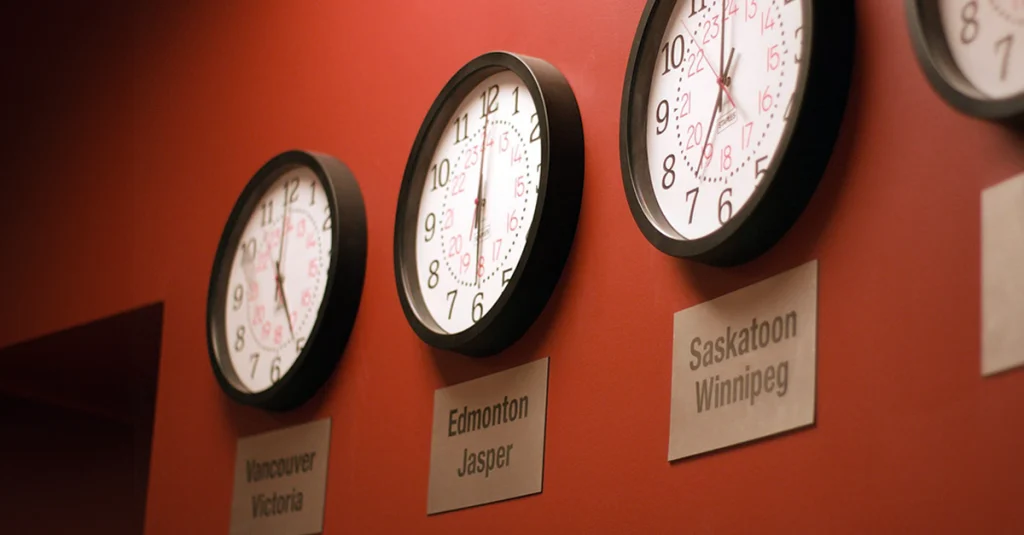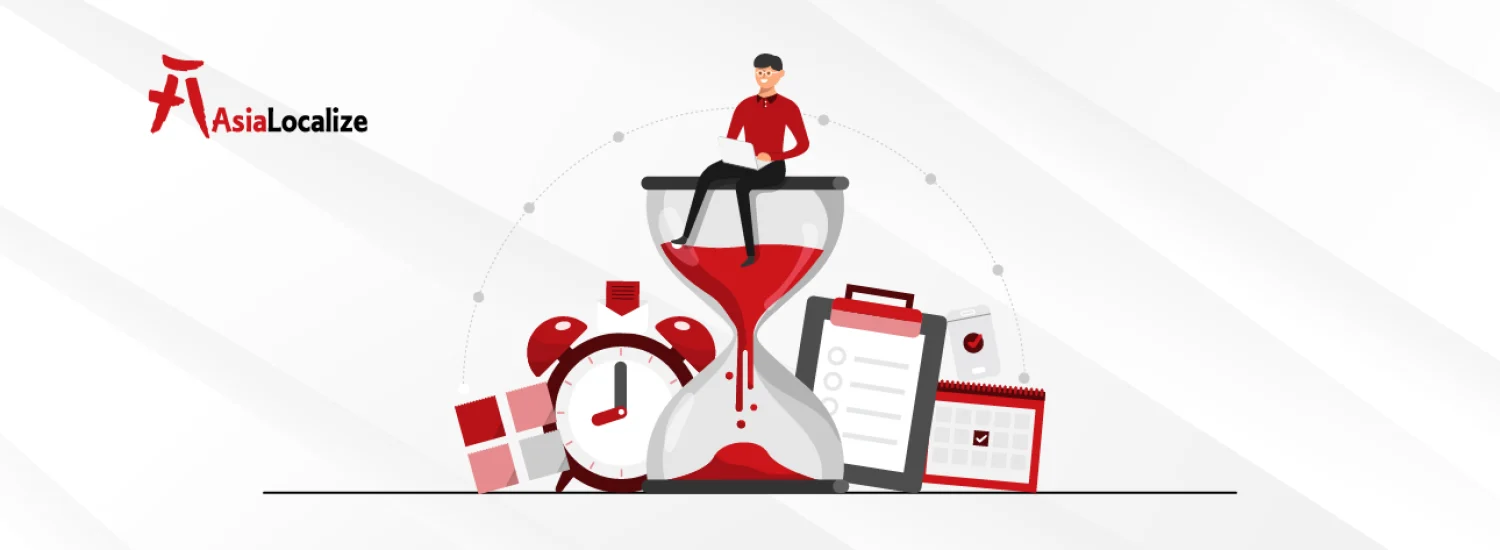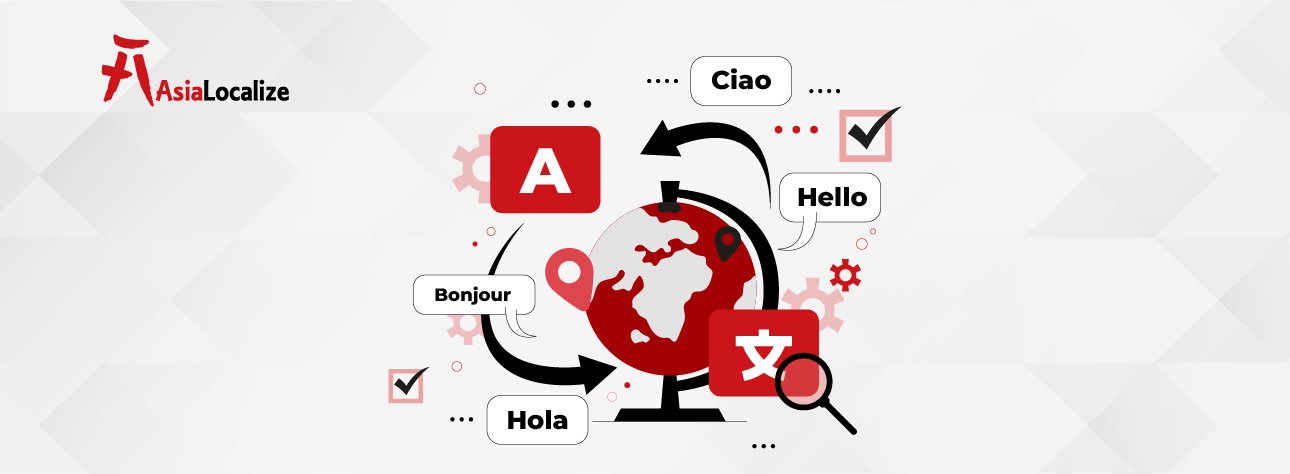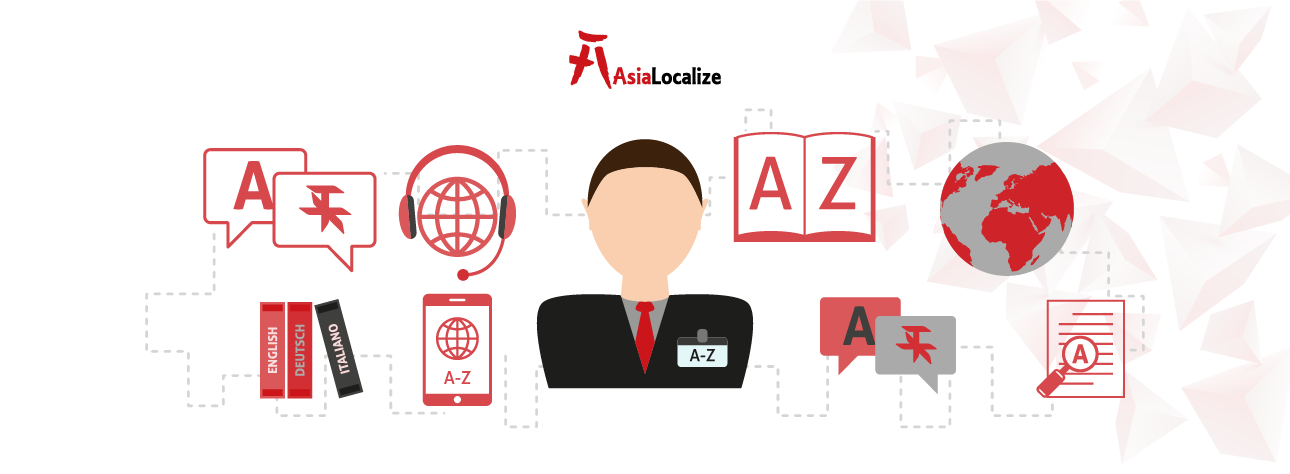Let’s be honest — time zones are a nightmare.
You think you’ve nailed the perfect meeting slot… then realize it’s 3 AM for your client in Sydney. You send out a campaign launch email at “9 AM sharp!” — and your users in Berlin get it mid-afternoon, while folks in New York are still asleep.
Missed calls, confused customers, delayed deals. All because one critical piece of the puzzle was overlooked: time localization.
If you’re building a product, running a global team, or serving customers across borders, time is not just a number on the clock — it’s part of your user experience. And when it’s done wrong, people notice.
But here’s the good news: time localization doesn’t have to be complicated or expensive. With the right steps (and the right tools), you can make your platform feel local, no matter where in the world your users are.
Stop losing time and start owning it! Let’s dive in.
What is Time Localization?
Time localization is the process of adapting time formats and time zones to suit the local expectations and standards of different regions. It goes beyond just converting hours — it’s about making time feel native to the user.
Think about it: someone in the U.S. is used to seeing 2:30 PM, while someone in France expects 14:30. In Japan, the order might be year-month-day, and in Brazil, daylight saving might shift the local time without warning.
Good time localization respects these regional and cultural nuances. It adjusts not only the time zone but also the format, down to whether a user expects a 24-hour clock or a 12-hour one, how date and time are combined, and whether local holidays or business hours should influence scheduling.
The High Stakes of Getting Time Wrong (Importance of Time Localization)
Ever scheduled a global webinar only to hear crickets because half your attendees showed up at the wrong time? That’s a direct hit to credibility, revenue, and trust. And the numbers don’t lie:
- 87% of consumers refuse to buy from a website that isn’t localized—language, time, currency, all of it.
- 80% of shoppers are more likely to purchase when an experience feels tailored, and that includes correct local timing.
- In the rapidly expanding world of real-time services, over 266 billion real-time transactions were processed in 2023—a 42% jump from the previous year. That number’s projected to climb to 575 billion by 2028
| Your App Speaks Code — Let Us Help It Speak the World’s Languages Too. Learn more about our software translation services. |
Steps to Localize Time
Localizing time is about creating a seamless, natural experience for every user, no matter where they are. Here’s how to handle time localization:
Analyzing Regional Time Formats
Let’s start with the basics: people read time differently depending on where they live.
In the U.S., users are comfortable seeing 8:00 PM. But in France, that same moment would be expected at 20:00.
This isn’t just formatting — it’s a reflection of cultural norms. For example:
- 12-hour clock systems dominate in the United States, Canada, the Philippines, and Australia, often paired with AM/PM to clarify context.
- 24-hour clocks are standard in most of Europe, Latin America, Asia, and military or technical contexts worldwide.
So, when you display time in your interface, ask yourself:
Will this format feel natural to my users, or force them to mentally convert it every time?
Using APIs for Time Zone Conversion
Now for the technical part: how do you manage time conversion for global audiences in real-time and at scale? This is where APIs and libraries become your best friends.
Instead of manually calculating time differences or writing error-prone logic, use tried-and-tested tools to automate it. Some developer favorites include:
- Intl.DateTimeFormat (native JavaScript): Perfect for formatting time and date based on locale settings.
- Luxon: A powerful modern alternative to Moment.js, built for flexibility and localization.
- Moment.js: Although it’s in maintenance mode, it’s still widely used for legacy systems and simple use cases.
- Date-fns: Modular, lightweight, and locale-aware — great for modern apps.
These tools allow you to:
- Convert timestamps to the user’s local time zone
- Format time in ways that feel native (e.g., “Monday, 12 July, 8:00 PM” in en-US vs. “Montag, 12 Juli, 20:00” in de-DE)
- Handle complexities like daylight saving time, leap years, or time zone offsets with precision
No need to reinvent the wheel — these libraries have it down to a science.
Testing and Validating Time Localization
Once you’ve implemented time localization, don’t skip testing — this is where real-world issues often emerge.
Start with functional testing:
- Are the time zones converting correctly based on the user’s location?
- Is the format intuitive and readable for each region?
Then, validate edge cases, such as:
- Daylight Saving Time (DST) changes (e.g., U.S. clocks spring forward in March and fall back in November)
- Leap years and irregular month lengths
- Users traveling between time zones — does your system update their time view accordingly?
Also, don’t forget the cultural context:
Does a 24-hour clock in the U.S. feel overly formal? Would a 12-hour clock in Germany appear confusing or unprofessional?
Whenever possible:
- Test with real users in different regions
- Use sandbox environments to simulate local time experiences
- Collect feedback early to fix potential confusion before it reaches production
| Ready to Make Your Campaigns Speak Every Language? Explore Our Marketing Translation Services Now! |
Best Practices of Time Localization
You’ve tackled the formats, handled the APIs, and tested your edge cases — but to truly deliver a polished, seamless experience for global users, time localization needs to be accurate, consistent, and user-centered at every touchpoint. Here’s how to do that with confidence.
Prioritize User Preferences
No two users are the same, and when it comes to time, personalization matters.
The best way to ensure accuracy is to respect each user’s locale and time zone from the very first interaction. You can detect this automatically through:
- Browser settings using JavaScript’s Intl.DateTimeFormat().resolvedOptions().timeZone
- Device or system locale on mobile apps
- User-selected preferences within your app or platform settings
Time zone localization helps you avoid confusion, especially when scheduling meetings, booking events, or sending reminders.
Maintain Consistency Across Platforms
Nothing breaks trust faster than seeing one time on your desktop and a different one on your phone.
Whether your users are browsing your website, using your mobile app, or checking out through your e-commerce platform, your time formatting should feel seamless and familiar across all touchpoints.
Here’s where consistency becomes a brand asset:
- Use the same time zone and format logic across platforms (don’t use 12-hour in-app and 24-hour in emails)
- Stick with localized calendar rules (e.g., week starting on Sunday in the U.S. vs. Monday in Europe)
- Align notification times so users don’t get alerts in the middle of the night
Automate When Possible
Manually converting and formatting time zones? That’s a fast track to errors and burnout.
Automation is your ally here, and it doesn’t have to be complicated.
With the right tools, you can:
- Automatically adjust time stamps to the user’s local time
- Format date and time strings based on locale
- Localize scheduling logic without reinventing the wheel
Translation Management Systems (TMS) often come with time and number formatting integrations, allowing you to embed software for global time management.
Other automation-ready solutions:
- Backend support from frameworks like Rails, Django, and Laravel, all of which offer robust time zone handling
- Front-end libraries like Luxon or date-fns that format for the user’s locale in milliseconds
| AI Speed, Human Precision — Experience MTP Translation Services Today. |

Time localization might seem like a technical detail, but as you’ve seen, it plays a huge role in building trust, clarity, and connection with your global users. Whether you’re launching a product, scheduling events, or running an international platform, getting time right means getting your users right.
And that’s where AsiaLocalize comes in.
For over 12 years, we’ve helped companies of all sizes translate, adapt, and localize their content from A to Z — across apps, websites, e-commerce platforms, enterprise software, and beyond. From marketing copy to backend UX, from cultural nuance to time and date formats, our team blends human linguistic expertise with the latest localization tech to ensure your message lands in the right place, time, and tone.
| Bridge Cultures, Not Just Languages Learn more about our localization services. |







